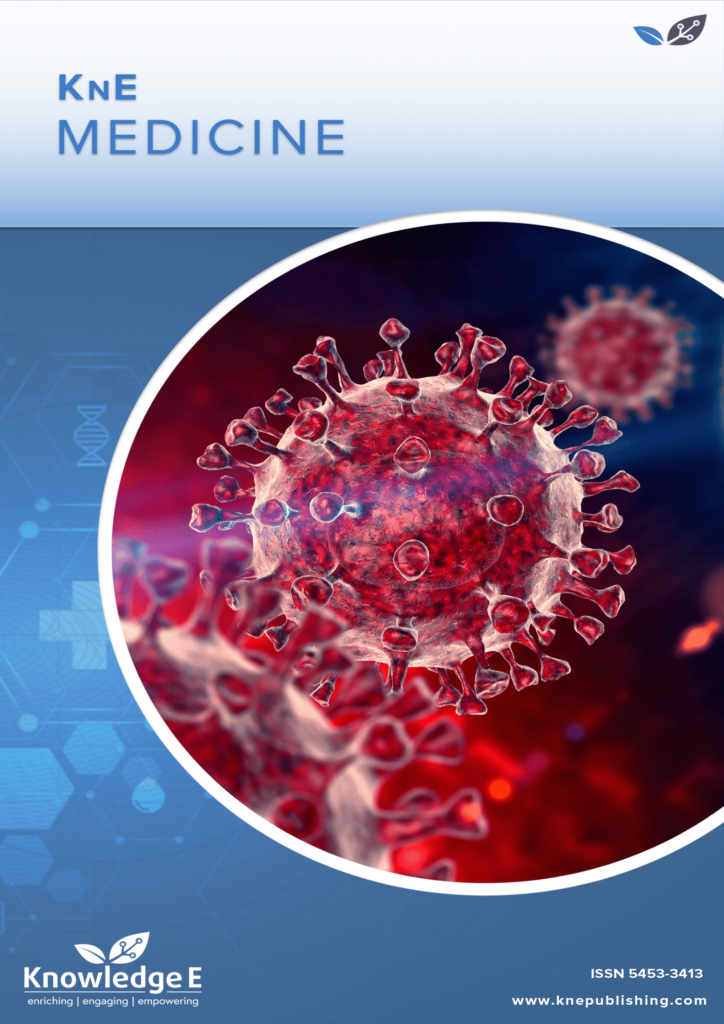
KnE Medicine
ISSN: 2519-125X
The latest conference proceedings on all fields of medicine.
Perspectives of COVID-19 Vaccines Among Indonesians: A Thematic Content Analysis of Online Media
Published date: Sep 15 2022
Journal Title: KnE Medicine
Issue title: The International Conference of Medicine and Health (ICMEDH)
Pages: 253–262
Authors:
Abstract:
The world continues to face the COVID-19 pandemic, including in Indonesia. The number of COVID-19 infections and deaths continue to escalate. COVID-19 vaccines were globally distributed and became a vital tool to prevent the spread of COVID-19 and reduce its life-threatening effects. However, community perspectives regarding COVID-19 vaccines are still varied, which is vital for promoting vaccine programs successfully. The purpose of this study was to explore the community perspectives of COVID-19 vaccines in Indonesia. This was qualitative research that utilized secondary data from online news media. The data were analyzed through content analysis using the NVivo 12 Plus software. The findings indicated that Indonesian community perspectives regarding COVID-19 vaccines are varied. Some accept the vaccines and think they are vital to prevent the increasing number of infections and stop the COVID-19 pandemic; however, some think that the COVID-19 vaccine is only a political issue, not essential, and some do not believe that COVID-19 exists. Negative beliefs or perspectives of COVID-19 vaccines are a barrier to successfully implementing vaccine programs. This study highlights the importance of understanding community perspectives and identifying problems in vaccination programs. Healthcare providers can utilize the findings to provide better health education, particularly in the context of the pandemic.
Keywords: COVID-19, vaccine, community perspective, online media, content analysis, NVivo analysis
References:
[1] Ciotti M, Ciccozzi M, Terrinoni A, Jiang WC, Wang CB, Bernardini S. The COVID-19 pandemic. Crit Rev Clin Lab Sci. 2020 Sep;57(6):365–88.
[2] World Health Organization. WHO Coronavirus (COVID-19) 2021 [cited 2021 Sep 20]. Available from: https://covid19.who.int/
[3] Khoo EJ, Lantos JD. Lessons learned from the COVID19 pandemic. Oslo, Norway: Acta Paediatrica. 2020.
[4] Pradhan D, Biswasroy P, Kumar Naik P, Ghosh G, Rath G. A review of current interventions for COVID-19 prevention. Arch Med Res. 2020 Jul;51(5):363–74.
[5] Güner R, Hasanoğlu I, Aktaş F. COVID-19: Prevention and control measures in community. Turk J Med Sci. 2020 Apr;50 SI-1:571–7.
[6] Liang T. Handbook of COVID-19 prevention and treatment. 2020.
[7] MacDonald NE; SAGE Working Group on Vaccine Hesitancy. Vaccine hesitancy: Definition, scope and determinants. Vaccine. 2015 Aug;33(34):4161–4.
[8] Sallam M. COVID-19 vaccine hesitancy worldwide: a concise systematic review of vaccine acceptance rates. Vaccines (Basel). 2021 Feb;9(2):160.
[9] Schuster M, Eskola J, Duclos P; SAGE Working Group on Vaccine Hesitancy. Review of vaccine hesitancy: Rationale, remit and methods. Vaccine. 2015 Aug;33(34):4157– 60.
[10] Soares P, Rocha JV, Moniz M, Gama A, Laires PA, Pedro AR, et al. Factors associated with COVID-19 vaccine hesitancy. Vaccines (Basel). 2021 Mar;9(3):300.
[11] Machingaidze S, Wiysonge CS. Understanding COVID-19 vaccine hesitancy. Nat Med. 2021 Aug;27(8):1338–9.
[12] Khan YH, Mallhi TH, Alotaibi NH, Alzarea AI, Alanazi AS, Tanveer N, et al. Threat of COVID-19 vaccine hesitancy in Pakistan: the need for measures to neutralize misleading narratives. Am J Trop Med Hyg. 2020 Aug;103(2):603–4.
[13] Dror AA, Eisenbach N, Taiber S, Morozov NG, Mizrachi M, Zigron A, et al. Vaccine hesitancy: the next challenge in the fight against COVID-19. Eur J Epidemiol. 2020. Aug;35(8):775–9.
[14] Lucia VC, Kelekar A, Afonso NM. COVID-19 vaccine hesitancy among medical students. J Public Health (Oxf). 2021 Sep;43(3):445–9.